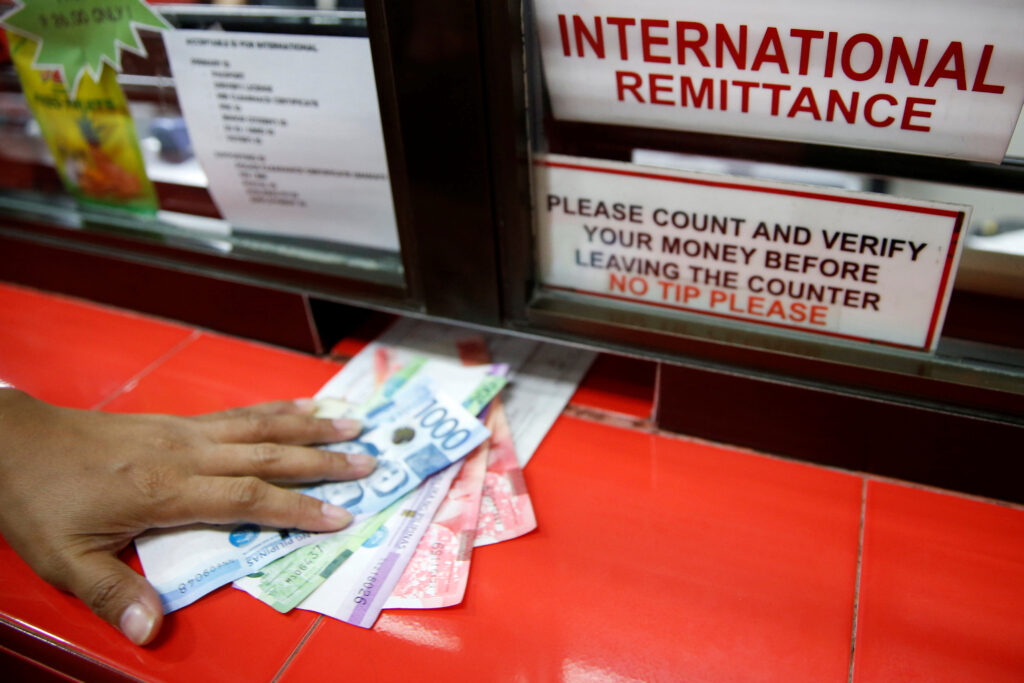Advancing a Twenty-First Century Approach to Remittances
Introduction
Each week, millions of migrants from around the world send a part of their paychecks back to their home countries. These payments, known as remittances, have become an increasingly vital source of income for emerging markets. Last year, remittance payments exceeded other forms of foreign money flows, such as foreign direct investment ($382 billion) and official development assistance ($256 billion). Valued at $890 billion, global remittances are larger than Switzerland’s entire economy, and they are expected to grow every year. Geopolitical events—including the ongoing conflict in the Middle East—can heighten the reliance on remittances as the primary source of income for households in areas devastated by wars.
The Role of Remittances in the Global Financial System
As the world’s economic leaders convene at the upcoming International Monetary Fund-World Bank meetings next week, and as South Africa becomes the latest in a series of emerging markets to hold the Group of Twenty (G20) presidency starting this December, remittances should be at the forefront of discussions about the global financial system.
From large emerging market countries in the G20 to small island economies, remittances not only form a large portion of many nations’ gross domestic product (GDP), but have become the biggest source of their external financing over the last decade. In the years since the COVID-19 pandemic, even as remittance flows and household reliance on remittances have grown, the cost of sending and receiving them has remained significantly higher than World Bank and G20 targets. For some cross-border payment corridors, the cost of sending two hundred dollars is as high as one hundred dollars. And most of these costs are passed on to migrants and their households.
The Macroeconomic Factors
There are macroeconomic factors in play when it comes to the post-pandemic volume and growth of remittances. The United States and advanced economies in Europe are the biggest sources of remittance flows into emerging markets. Sustained GDP growth and recovering labor markets in advanced economies have led to growth in the volume of remittance flows for emerging markets over the last decade.
In contrast, recessionary pressures in advanced economies, which lead to lower incomes and higher unemployment, as well as inflationary pressures, can impact the incomes of migrant workers, leading to lower remittances. Of the combined global value of $890 billion, the emerging market share of remittances is $669 billion. For these emerging market recipients, remittance flows can provide buffers for current account and fiscal deficits. This is especially crucial for economies whose remittance flows form a large portion of their GDP.
The Importance of Sustainable Development Goals (SDGs)
There is an emerging bifurcation in low- and middle-income countries that receive remittance flows. Among emerging markets, India, China, Mexico, the Philippines, and Egypt together account for almost half (45 percent) of the emerging market share of global remittances. For all of these economies, remittance flows on average form less than 9 percent of their GDP. In smaller economies with limited access to international capital markets, remittances play a critical role in supporting current account balances and addressing fiscal deficits. For example, in countries such as Tonga, Tajikistan, and Lebanon, remittance flows can make up over 30 percent of GDP.
However, migrants spend a large part of their income on transaction costs, which impacts households’ ability to spend and save. Both the World Bank, through its sustainable development goals, and the G20 have attempted to address the issue of high costs. The global average cost of sending remittances stands at 6.35 percent, more than twice the sustainable development goal of 3 percent, and above the G20 target of 5 percent. Costs are below 5 percent for only 37 percent of corridors globally, and there are major regional differences, especially within emerging markets.
Reducing Remittance Costs
Therefore, an important question for policymakers is how to reduce the costs to migrants and their families and meet the benchmarks set by the World Bank and the G20. Remittance costs are made up of transfer fees and foreign exchange costs, with fees making up three-fifths to two-thirds of costs across digital and cash channels. The type of payment channel used by senders and receivers matters for reducing costs—digital payments are typically less expensive than non-digital counterparts, with banks being the costliest way to send money across borders, and mobile operators the cheapest.
While digitalization of remittance channels can help reduce costs, the more significant global effort, to be undertaken by the G20 and the international financial institutions, must focus on the systemic components of the cross-border payments cost structure. A few global existing examples have created the proof of concept for lowering the costs of cross-border payments:
- The introduction of Wise (formerly TransferWise) as an institutional nonbank partner into the United Kingdom’s Faster Payments System—which primarily included banks—improved costs and speed estimates. This demonstrates that new and nonbank participants must be included in the ecosystem of cross-border payments. This can include emerging fintech companies as well to provide more options to remittance senders and receivers.
- Project Nexus is an experiment run by the Bank for International Settlements aimed at connecting domestic payments systems that run 24/7, all through one platform. This makes possible the interoperability necessary to connect distinct domestic payments systems through regulatory and technological harmonization. These scalable models can offer a way forward to interlink countries’ domestic models. Importantly, Nexus offers transparent schemes and governance models that countries can adopt to participate in the project.
- Retail digital assets, especially combined with easy conversion and disbursement options—such as stablecoins or central bank digital currencies—can address high transfer fees associated with remittances. Many such multicurrency tokenization projects are currently underway. But so far, these projects have not focused primarily on improving remittance payments. It would be interesting to see how a high-volume corridor like the one between the United States and Mexico is impacted by the use of digital assets for remittances.
Introducing new participants, better rules, and innovative technologies can lower remittance costs for individuals and households. Too often, the issue is that remittances are an afterthought in the development of payments systems—their cross-border quality makes them secondary to domestic financial inclusion and payments concerns. Remittances now make up one-sixth of all cross-border payments—they remain significant drivers of countries’ GDPs and geopolitically relevant, especially in a time of increasing instability. It is time that international financial institutions and domestic markets reduce the pains associated with sending and receiving them.
Alisha Chhangani is an assistant director at the Atlantic Council’s GeoEconomics Center.
Ananya Kumar is the deputy director, future of money at the Atlantic Council’s GeoEconomics Center.
Further reading
Fri, Oct 11, 2024
Treasury’s Jay Shambaugh on why the US needs the IMF and World Bank in order to respond to crises
Transcript
By
Watch the full event Speaker Jay ShambaughUnder Secretary for International Affairs, US Department of the Treasury Moderator Greg IpChief Economics Commentator, the Wall Street Journal Introduction Josh LipskySenior Director, GeoEconomics Center, Atlantic Council Event transcript Uncorrected transcript: Check against delivery JOSH LIPSKY: Good morning. Welcome to the Atlantic Council. I am Josh Lipsky, senior director […]
Image: Philippine Peso bills sent by a Filipino working abroad are pictured being received by a relative at a money remittance center in Makati City, Metro Manila, Philippines, September 19, 2018. REUTERS/Eloisa Lopez
SDGs, Targets, and Indicators
1. Which SDGs are addressed or connected to the issues highlighted in the article?
- SDG 8: Decent Work and Economic Growth
- SDG 10: Reduced Inequalities
- SDG 17: Partnerships for the Goals
The article discusses the importance of remittances as a source of income for emerging markets, which is connected to SDG 8’s goal of promoting sustained, inclusive, and sustainable economic growth, full and productive employment, and decent work for all. The article also highlights the high costs of sending and receiving remittances, which relates to SDG 10’s target of reducing the transaction costs of migrant remittances. Additionally, the article mentions the efforts of the World Bank and the G20 to address the issue, which aligns with SDG 17’s focus on strengthening global partnerships for sustainable development.
2. What specific targets under those SDGs can be identified based on the article’s content?
- SDG 8.10: Strengthen the capacity of domestic financial institutions to encourage and expand access to banking, insurance, and financial services for all
- SDG 10.c: By 2030, reduce to less than 3 percent the transaction costs of migrant remittances and eliminate remittance corridors with costs higher than 5 percent
- SDG 17.17: Encourage and promote effective public, public-private, and civil society partnerships, building on the experience and resourcing strategies of partnerships
The article highlights the need to reduce the costs of sending and receiving remittances, which aligns with SDG 10.c’s target of reducing transaction costs to less than 3 percent and eliminating corridors with costs higher than 5 percent. It also mentions the role of financial institutions in expanding access to financial services, which relates to SDG 8.10’s target of strengthening the capacity of domestic financial institutions. Additionally, the article emphasizes the importance of partnerships in addressing the issue, which aligns with SDG 17.17’s target of promoting effective public, public-private, and civil society partnerships.
3. Are there any indicators mentioned or implied in the article that can be used to measure progress towards the identified targets?
- Remittance costs as a percentage of the amount sent
- Percentage of remittance corridors with costs below 3 percent
- Percentage of remittance corridors with costs below 5 percent
The article mentions that the global average cost of sending remittances is 6.35 percent, which can be used as an indicator to measure progress towards the target of reducing transaction costs to less than 3 percent. It also states that costs are below 5 percent for only 37 percent of corridors globally, indicating the need to eliminate corridors with costs higher than 5 percent.
Table: SDGs, Targets, and Indicators
| SDGs | Targets | Indicators |
|---|---|---|
| SDG 8: Decent Work and Economic Growth | 8.10: Strengthen the capacity of domestic financial institutions to encourage and expand access to banking, insurance, and financial services for all | Remittance costs as a percentage of the amount sent |
| SDG 10: Reduced Inequalities | 10.c: By 2030, reduce to less than 3 percent the transaction costs of migrant remittances and eliminate remittance corridors with costs higher than 5 percent | Percentage of remittance corridors with costs below 3 percent |
| 10.c: By 2030, reduce to less than 3 percent the transaction costs of migrant remittances and eliminate remittance corridors with costs higher than 5 percent | Percentage of remittance corridors with costs below 5 percent | |
| SDG 17: Partnerships for the Goals | 17.17: Encourage and promote effective public, public-private, and civil society partnerships, building on the experience and resourcing strategies of partnerships | N/A |
Source: atlanticcouncil.org









